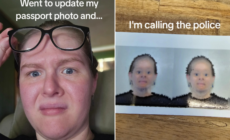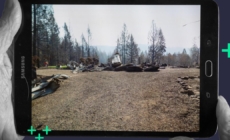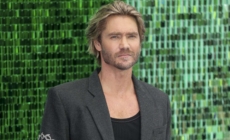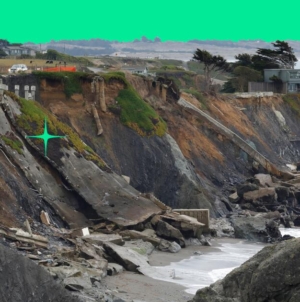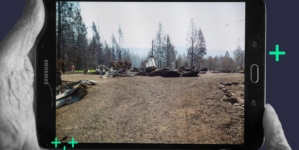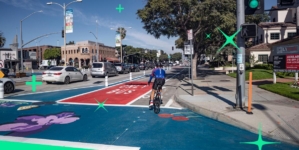-
Scottie Scheffler Suddenly Loses Caddie for FedEx St. Jude Championship Final Round - 10 mins ago
-
Canyon fire more than 60% contained as firefighters make ‘good progress’ - 41 mins ago
-
INDYCAR Live Updates, Leaderboard: Top Moments From Grand Prix of Portland - 47 mins ago
-
Woman Goes to Update Passport Photo—Can’t Cope With What Happens Next - 49 mins ago
-
#Strong is a recovery scam. California’s future demands something more - about 1 hour ago
-
Commanders RB Gives Jayden Daniels Edge Over Chargers Star - about 1 hour ago
-
Titans QB Cam Ward Understood The Assignment In Preseason Debut - 2 hours ago
-
Chad Michael Murray nearly died at 15 from twisted intestines emergency - 2 hours ago
-
Commentary: The state sets lofty goals in the name of a brighter future. What’s a vision and what’s a hallucination? - 2 hours ago
-
NFL Preseason Betting Odds, Picks For Dolphins-Bears, Saints-Chargers - 2 hours ago
Commentary: The state sets lofty goals in the name of a brighter future. What’s a vision and what’s a hallucination?
In April of 2006, I watched a posse of politicians gather at Skid Row’s Midnight Mission to introduce, with great fanfare and unbridled confidence, a 10-year plan to end homelessness in Los Angeles.
That didn’t work out so well.
Twelve years later, in his 2018 State of the City address, Mayor Eric Garcetti made a full-throated vow to quit fooling around and get the job done.
Los Angeles knows how to weather a crisis — or two or three. Angelenos are tapping into that resilience, striving to build a city for everyone.
“We are here to end homelessness,” he said.
Mission not accomplished.
We have a habit of setting lofty goals and making grand promises in Los Angeles and in California.
That’s not necessarily a bad thing. Better to have politicians and experts who study the pressing issues of the day and go out on a limb rather than shrug their shoulders.
“It’s hard to do anything if you don’t have a vision,” said Jessica Bremner, a Cal State L.A. urban geography professor. Transit, housing and infrastructure needs won’t materialize without that vision, she added. “Nothing will move.”
Agreed. And all of us, not just politicians, want to believe there’s a better version of our community — a brighter future.
But there is a big difference between a vision and a hallucination, and we’ve had some of both in recent years.
Here’s a sampling:

A mobile phone user looks at an earthquake warning application. After the Northridge quake, the state passed a law requiring seismic upgrades of hospitals by 2030. As of 2023, nearly two-thirds had yet to complete the required improvements.
(Richard Vogel / Associated Press)
In 2022, California set a goal of eliminating the sale of gas-powered vehicles after 2035 — which would dramatically reduce greenhouse emissions — and reaching carbon neutrality by 2045.
After the 1994 Northridge earthquake, the state did more than set a goal. It passed a law requiring hospitals to upgrade seismic safety by 2030.
Los Angeles, under Garcetti, championed Vision Zero in 2015. The goal? Eliminate traffic deaths by 2025. Not reduce, but eliminate.

Steve Lopez
Steve Lopez is a California native who has been a Los Angeles Times columnist since 2001. He has won more than a dozen national journalism awards and is a four-time Pulitzer finalist.
In 2020, the city embraced SmartLA 2028, a plan to reduce reliance on fossil fuels and gas-powered vehicles and build “a data-driven connected city, which addresses the digital divide and brings fresh ideas, including tele-health, clean tech and a switch to mass transit.”
In 2021, the California Master Plan for Aging set “five bold goals” to increase affordable housing and improve health, caregiving and economic security for older adults and those with disabilities by 2030.
In anticipation of L.A.’s hosting of the 2028 Summer Olympics and Paralympics, Metro introduced its “Twenty-eight by ‘28” initiative in 2018, outlining more than two dozen transit objectives.
The DTLA 2040 plan, adopted by the city in 2023, would add 70,000 housing units and 55,000 jobs over the next 15 years.
So how’s it all going?
The good news: There’s been a lot of progress.
The bad news: Where to begin?
Surely you’ll fall over backward when I tell you that funding shortages, politics, evolving priorities, lack of coordination, haphazard and disjointed planning, and less than stellar leadership have stymied progress on many fronts.
On homelessness, thousands have been housed and helped thanks to big initiatives and voter-approved resources. But as an observer once described it, we’ve been managing rather than solving the crisis and essentially bailing a leaky boat with a teaspoon. And now the agency at the helm is in disarray.
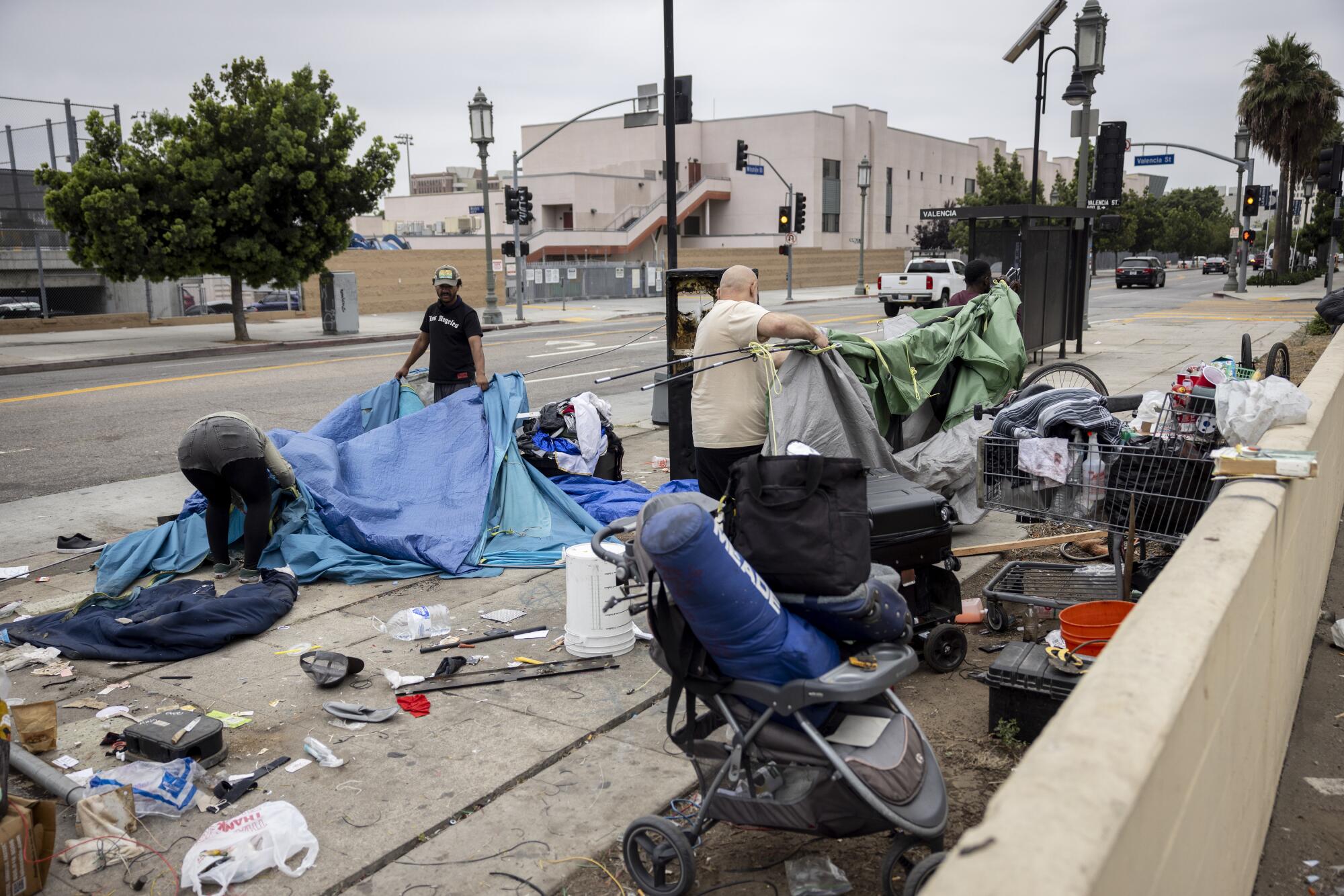
People experiencing homelessness pack their tents and belongings during the cleanup of an encampment on Wilshire Boulevard in downtown Los Angeles.
(Etienne Laurent / For The Times)
On climate change, California deserves a big pat on the back for at least acknowledging the crisis and responding with big ideas. But the Trump administration, which is likely to hold steady up to and beyond the point at which Mar-a-Lago is underwater, has all but declared war on the Golden State’s good intentions, eliminating funding for key projects and challenging the state’s authority.
The U.S. Supreme Court has sided with Trump, Congress and fossil fuel companies in opposing the state’s ambitions. Meanwhile, a grim analysis last year, which can’t be blamed on Trump, said the state would have to triple the pace of progress to reach its 2030 greenhouse gas reduction target.
As for the law requiring seismic upgrades of hospitals by 2030, as of 2023, nearly two-thirds had yet to complete the required improvements and many had asked for amendments and extensions.
L.A.’s Vision Zero, meanwhile, which promised the redesign of high-accident locations and multiple other safety upgrades for pedestrians, cyclists and motorists, has been a singular embarrassment.
Rather than an elimination of traffic deaths, the number has surged, and an audit released earlier this year serves as an indictment of local leadership. It cited lack of accountability along with “conflicts of personality, lack of total buy-in for implementation, disagreements over how the program should be administered.”
“Incredibly disappointing,” said Michael Manville, a UCLA professor of urban planning. “The city remains incredibly dangerous for cyclists and pedestrians.”
Manville didn’t have very high grades, either, for Metro’s 28×28 foray.
“It’s a joke at this point,” he said, although even though he noted that some progress is undeniable, citing in particular the expected completion of the Purple Line extension to the Westside in time for the Olympics.
But many of the 28 original projects won’t make the deadline, and oh, by the way, there’s no money at the moment to pay for the promised fleet of 2,700 buses for what Mayor Karen Bass has called the transit-first, “no-car” Olympics.
One morning in June, I stood on Van Nuys Boulevard in Pacoima with L.A. City Councilwoman Monica Rodriguez. She was looking to the north, in the direction of an empty promise.
“This is the home of the future San Fernando Valley Light Rail,” Rodriguez said. “It was supposed to be one of the 28 by 28, and we’re now looking at probably 2031 to 2032 for its completion … in a community that has a majority dependence … on public transit.”
We also visited the site of a proposed Sylmar fire station for which there was a groundbreaking ceremony about two decades ago. Rodriguez said with the adjacent hills turning brown as fire season approaches, Sylmar is long overdue for the station, but the city is hobbled by a massive budget deficit.
“Now I’ve just got to get the money to build it,” Rodriguez said.

An image from video shows the aftermath of a traffic collision involving three vehicles on the southbound lanes of the 405 Freeway near Wilshire Boulevard. Former Mayor Eric Garcetti championed Vision Zero in 2015. The goal? Eliminate traffic deaths by 2025.
(KTLA)
Sometimes it seems as if the big goals are designed to redirect our attention from the failures of daily governance. Sure, there’s a 10-year wait to get your ruptured sidewalk fixed, but flying taxis are in the works for the Olympics.
And one convenient feature of long-term goals is that when 2035 or 2045 rolls around, few may remember who made the promises, or even recall what was promised.
In Professor Bremner’s vision of a rosier L.A. future, there would be more buses and trains on the lines that serve the Cal State L.A. transit station. She told me she talks to her students about the relationship between climate change and the car culture, and then watches them hustle after night classes to catch a bus that runs on 30-minute intervals or a train that rolls in once an hour.
As for the other big promises I mentioned, SmartLA 2028 lays out dozens of laudable but perhaps overly ambitious goals — “Los Angeles residents will experience an improved quality of life by leveraging technology to meet urban challenges. No longer the ‘car capital of the world’, residents will choose how they wish to get around LA, using a single, digital payment platform, with choices like renovated Metro rail and bus systems or micro transit choices, such as on-demand LANow shuttles or dockless bicycles.” But in the 50-page strategy document, the word “challenges” is mentioned quite a bit, and I worry that this particular reference could be the kiss of death:
“City of Los Angeles departments have varying funding sources, missions, and directives, which can inhibit unified, citywide Smart City technology initiatives.”
It’s a little too soon to know whether the DTLA 2040 goals will rank as vision or hallucination, but downtown is the logical place for high-density residential development and construction cranes are already on the job. As for the Master Plan for Aging, there’s been progress but also uncertainty about steady funding streams, particularly given current state budget miseries, and there’s no guarantee the plan will be prioritized by future governors.
“Goals are critical,” said Mark Gold, director of water scarcity solutions at the Natural Resources Defense Council. “But they need to be followed up with implementation plans, with budgets, funding mechanisms, milestones and metrics.”
Gold recalls Garcetti’s promise in 2019 that all of L.A.’s wastewater would be recycled by 2035.
“That is nowhere close,” said Gold, but two other goals might be within reach. One is to have 70% of L.A.’s water locally sourced by 2035, the other is for 80% of county water to be local by 2045, using increased stormwater capture, recycled wastewater, groundwater remediation and conservation.
When he ran Heal the Bay, Gold implemented an annual report card for ocean water quality at various beaches. Maybe we ought to use the same system every time a politician takes a bow for introducing a bold, far-reaching goal.
Without the measuring stick, Gold said, “you end up looking back and saying, ‘remember when we were going to do this and that and it never happened?’ You have to continuously revisit and grade yourself on how you’re doing.”

Plans for the 2028 Olympics and Paralympics are linked to a fleet of buses to transport people to and from venues like SoFi Stadium to avoid a traffic meltdown. The plan includes a $2-billion ask of the Trump administration to lease 2,700 buses to join Metro’s fleet of about 2,400.
(Deborah Netburn / Los Angeles Times)
While it’s true, Manville said, that “L.A. seems to be better at kicking off grand plans than seeing them through, that’s not unique to Los Angeles.”
He cited “Abundance” as one of several recent books making the case that “lots of cities in blue states can’t seem to get out of their own way.”
The failures of virtuous Democrats are indeed on full display in California and beyond. But the other side of the aisle is not without its own sins, beginning with cult-like denial of climate change and, speaking of empty promises, undying devotion to a man who said he would end the war in Ukraine before he took office and bring down grocery prices on Day One.
Would you rather live in a state crazy enough to still think it can build a bullet train and outlaw carbon, or in one of the many hurricane-battered states crazy enough to think this is a swell time to get rid of FEMA?
If you’re reaching for the stars, making it to the moon isn’t a bad start.
steve.lopez@latimes.com
Source link



